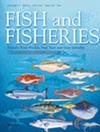美国基于生态系统的渔业管理政策和路线图:评估进展和应用经验教训
IF 6.1
1区 农林科学
Q1 FISHERIES
引用次数: 0
摘要
随着环境变化、物种转移、新的海洋利用和其他因素迫使海洋走向新的状态,对基于生态系统的渔业管理(EBFM)的需求日益迫切。在美国,国家海洋和大气管理局的国家海洋渔业局(NOAA Fisheries)于2016年制定了EBFM政策,并附有包含49个行动项目的路线图,以支持基于海洋生态系统的管理和保护美国联邦管辖下的渔业、栖息地和受保护物种。2024年,NOAA渔业更新了EBFM政策和路线图,并组建了一个科学和政策专家团队,以审查进展情况,并在第一次路线图迭代中吸取教训。总结了四个关键经验:(1)美国在EBFM方面取得了实质性进展;(2)加强协调可以进一步促进进展;(3)将科学与管理活动联系起来需要更多的努力;(4)在整个EBFM实施过程中,需要更好地整合人的维度。推动路线图取得进展的因素包括:领导和员工层面的拥护者;使用参与性程序;由生态系统冲击和威胁驱动的动机;并利用现有的流程和框架。更新后的EBFM路线图支持通过改进协调、整合和知识交流来实施美国法律的历史性和持续性努力,并有助于解决美国海洋渔业、栖息地和受保护资源面临的许多紧迫挑战。本文章由计算机程序翻译,如有差异,请以英文原文为准。
The U.S. Ecosystem‐Based Fisheries Management Policy and Road Map: Assessing Progress and Applying Lessons Learned
The need for ecosystem‐based fisheries management (EBFM) is growing more urgent as environmental changes, species shifts, new ocean uses, and other factors force oceans toward novel states. In the United States, the National Oceanic and Atmospheric Administration's National Marine Fisheries Service (NOAA Fisheries) developed an EBFM Policy in 2016, accompanied by a Road Map of 49 action items, to support marine ecosystem‐based management and conservation of fisheries, habitats, and protected species under U.S. federal jurisdiction. In 2024, NOAA Fisheries updated its EBFM Policy and Road Map and formed a team of science and policy experts to review progress and derive lessons learned during the first Road Map iteration. Four key lessons emerged: (1) progress toward EBFM in the U.S. has been substantial; (2) greater coordination could further enhance progress; (3) more effort is required to link science to management activities; and (4) human dimensions need greater integration throughout EBFM implementation. Enabling factors for progress on the Road Map included: champions at both the leadership and staff levels; use of participatory processes; motivation driven by ecosystem shocks and threats; and leveraging existing processes and frameworks. The updated EBFM Road Map supports historic and ongoing efforts to implement U.S. laws through improved coordination, integration, and knowledge exchange and can help to address many urgent challenges facing U.S. marine fisheries, habitats, and protected resources.
求助全文
通过发布文献求助,成功后即可免费获取论文全文。
去求助
来源期刊

Fish and Fisheries
农林科学-渔业
CiteScore
12.80
自引率
6.00%
发文量
83
期刊介绍:
Fish and Fisheries adopts a broad, interdisciplinary approach to the subject of fish biology and fisheries. It draws contributions in the form of major synoptic papers and syntheses or meta-analyses that lay out new approaches, re-examine existing findings, methods or theory, and discuss papers and commentaries from diverse areas. Focal areas include fish palaeontology, molecular biology and ecology, genetics, biochemistry, physiology, ecology, behaviour, evolutionary studies, conservation, assessment, population dynamics, mathematical modelling, ecosystem analysis and the social, economic and policy aspects of fisheries where they are grounded in a scientific approach. A paper in Fish and Fisheries must draw upon all key elements of the existing literature on a topic, normally have a broad geographic and/or taxonomic scope, and provide general points which make it compelling to a wide range of readers whatever their geographical location. So, in short, we aim to publish articles that make syntheses of old or synoptic, long-term or spatially widespread data, introduce or consolidate fresh concepts or theory, or, in the Ghoti section, briefly justify preliminary, new synoptic ideas. Please note that authors of submissions not meeting this mandate will be directed to the appropriate primary literature.
 求助内容:
求助内容: 应助结果提醒方式:
应助结果提醒方式:


